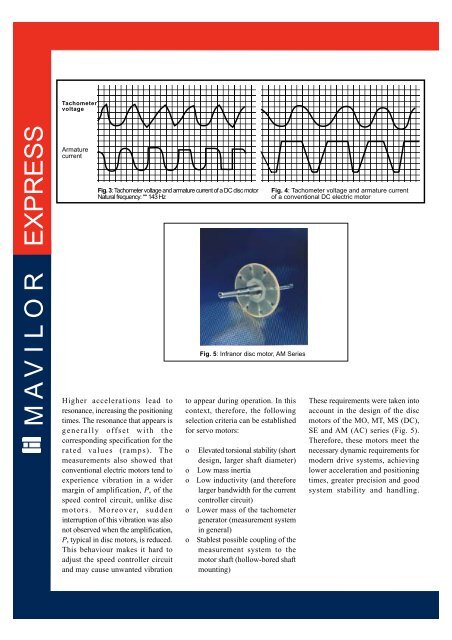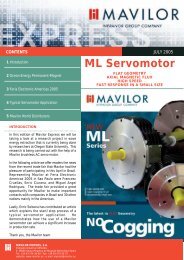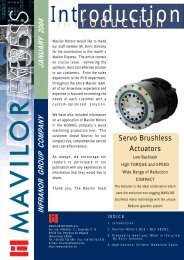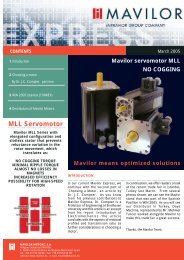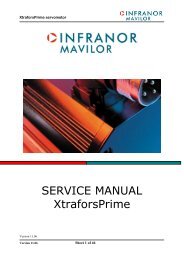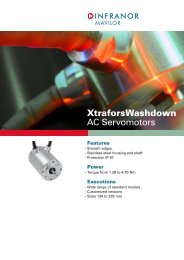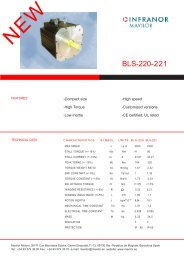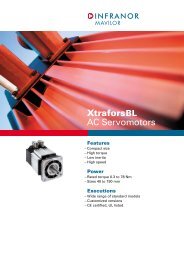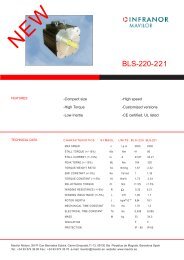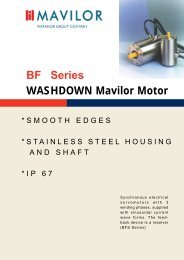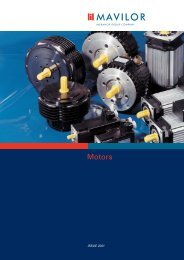Introduction - Mavilor
Introduction - Mavilor
Introduction - Mavilor
You also want an ePaper? Increase the reach of your titles
YUMPU automatically turns print PDFs into web optimized ePapers that Google loves.
Tachometer<br />
voltage<br />
M A V I L O R EXPRESS<br />
Armature<br />
current<br />
Fig. 3: Tachometer voltage and armature current of a DC disc motor<br />
Natural frequency: ** 143 Hz<br />
Higher accelerations lead to<br />
resonance, increasing the positioning<br />
times. The resonance that appears is<br />
generally offset with the<br />
corresponding specification for the<br />
rated values (ramps). The<br />
measurements also showed that<br />
conventional electric motors tend to<br />
experience vibration in a wider<br />
margin of amplification, P, of the<br />
speed control circuit, unlike disc<br />
motors. Moreover, sudden<br />
interruption of this vibration was also<br />
not observed when the amplification,<br />
P, typical in disc motors, is reduced.<br />
This behaviour makes it hard to<br />
adjust the speed controller circuit<br />
and may cause unwanted vibration<br />
Fig. 5: Infranor disc motor, AM Series<br />
to appear during operation. In this<br />
context, therefore, the following<br />
selection criteria can be established<br />
for servo motors:<br />
o Elevated torsional stability (short<br />
design, larger shaft diameter)<br />
o Low mass inertia<br />
o Low inductivity (and therefore<br />
larger bandwidth for the current<br />
controller circuit)<br />
o Lower mass of the tachometer<br />
generator (measurement system<br />
in general)<br />
o Stablest possible coupling of the<br />
measurement system to the<br />
motor shaft (hollow-bored shaft<br />
mounting)<br />
Fig. 4: Tachometer voltage and armature current<br />
of a conventional DC electric motor<br />
These requirements were taken into<br />
account in the design of the disc<br />
motors of the MO, MT, MS (DC),<br />
SE and AM (AC) series (Fig. 5).<br />
Therefore, these motors meet the<br />
necessary dynamic requirements for<br />
modern drive systems, achieving<br />
lower acceleration and positioning<br />
times, greater precision and good<br />
system stability and handling.


